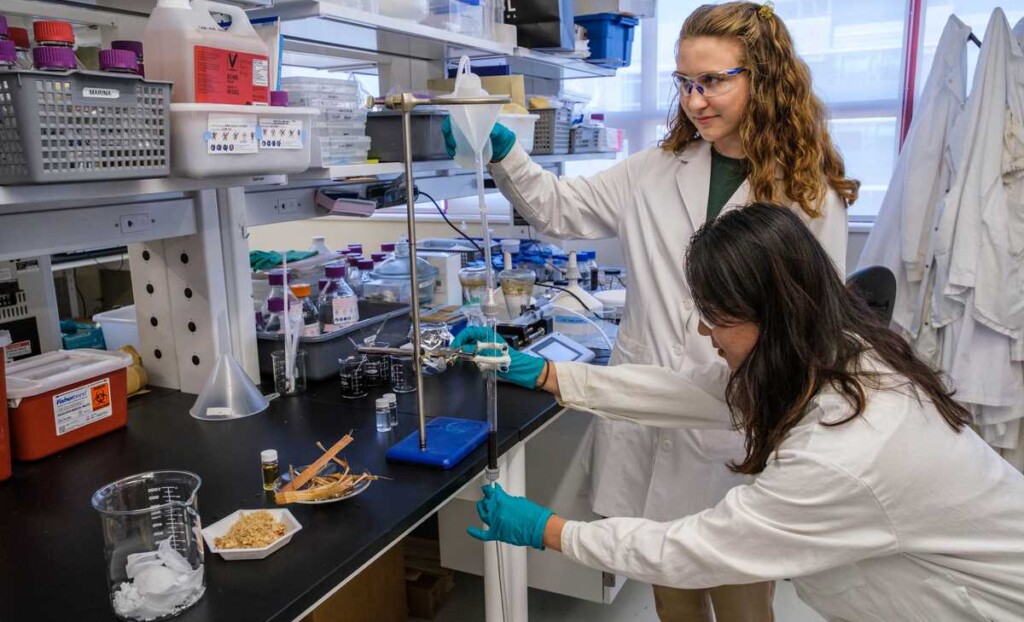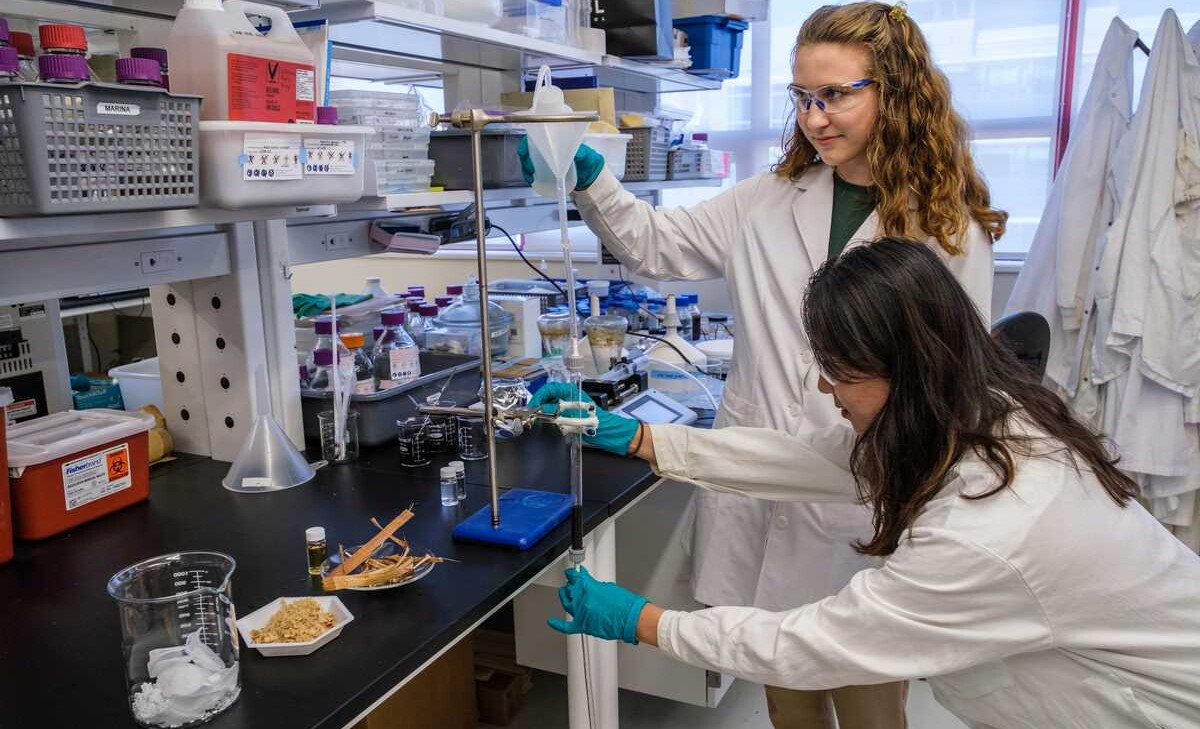
What do you get when you cross sawdust and polyphenols? A water filter that can remove 99.9% of microplastics; and that’s no joke.
The health of effects of ingesting microplastics are, predictably, not good, though the science is in its early stages. We already know that microplastics rain down over the world from potentially as high up as the jet stream, that they are present in the deepest ocean trenches, and some of the most remote mountain tops.
Researchers looking for better ways to filter microscopic particles of plastic from water sources investigated the properties of wood and other plant material and found they work extremely well, with very little cost and potentially unlimited scaling potential.
The water filter design, which the inventors called “bioCap” is made of sawdust, composed of cellulose, hemicellulose, and lignan but which itself isn’t a very good filter; removing just 10% of micro and nanoparticles of plastic. However, with the addition of polyphenols like tannic acid, a defense chemical found in almost all plants that lack underground root systems, that effectiveness became almost perfect.
The polyphenols create strong molecular interactions with polymer particles, including many microplastics, and which didn’t wear out even after repeated filtering trials.
All the commonly-found varieties of plastic polymer in packaging, artificial textiles, and building materials were run through the filter in micro or nano-sized particles.
“By taking advantage of the different molecular interactions around tannic acids, our bioCap solution was able to remove virtually all of these different microplastic types,” said Orlando Rojas, one of the study’s corresponding authors.
OTHER SUSTAINABLE SOLUTIONS: This Tower Filters 273 Hot Air Balloons-Worth of Pollution per Day in India City
He told his university press that in a test to remove particles just 110 nanometers in diameter, which are known to cross the blood-brain barrier, fewer were found accumulating in the internal organs of mice watered with microplastic-contaminated liquid.
“Most solutions proposed so far are costly or difficult to scale up,” Rojas said. “We’re proposing a solution that could potentially be scaled down for home use or scaled up for municipal treatment systems.”
He points out that bark, sawdust, and leaves are extremely easy to obtain essentially anywhere on Earth an entrepreneur would think to open a production line of these water filters.
SHARE This Great Yet Ridiculously Simple Idea With Your Friends…




















